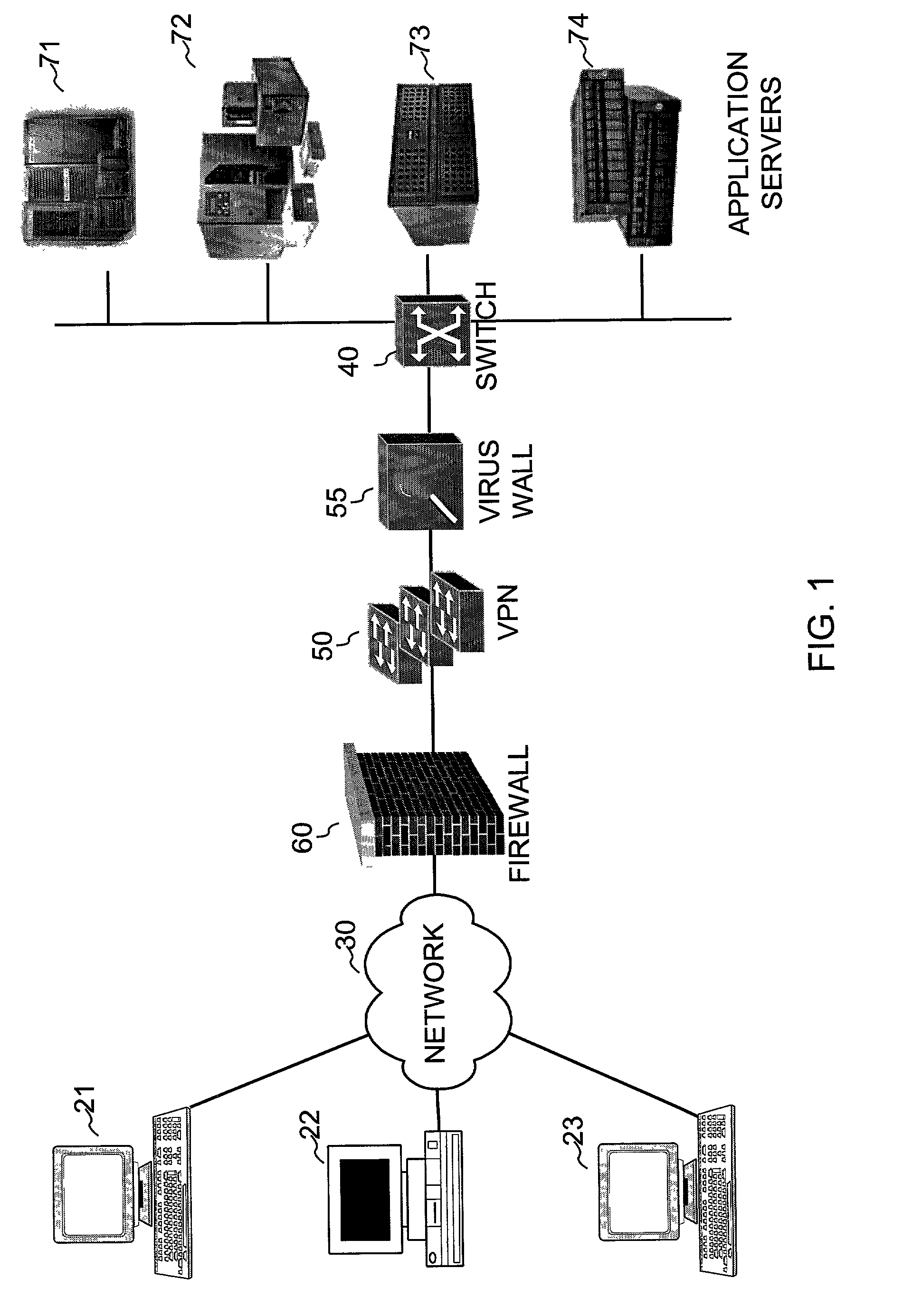Systems and methods for packet distribution
a packet distribution and packet technology, applied in the field of advanced network services, can solve the problems of labor-intensive configuration and integration, limited flexibility of end-users, and limitations of hard-wired environments
- Summary
- Abstract
- Description
- Claims
- Application Information
AI Technical Summary
Problems solved by technology
Method used
Image
Examples
example
Embodiments Supporting High Availability Services
[0177] Embodiments of the present invention can incorporate several features to ensure high availability. First, as shown in FIG. 15, the invention can be implemented with redundant packeting engines 1500 and 1501 coupled to hub 1540, hubs 1541-43, and intermediate appliances 1551-1553. Examples of intermediate appliances, in an embodiment, include intrusion detection systems, firewalls, virus scanners, proxy servers, VPN, and so on. Redundancy is possible in an embodiment because packeting engines 1500 and 1501 are stateless and service table consistency is maintained. In normal operating mode, packeting engine 1500 is primary and it broadcasts ARP messages to associate the master IP address for the pair of packeting engines 1500-1501 with its own MAC address. Packeting engine 1500 then receives all packets for registered service IP addresses defined on packeting engines 1500 and 1501. If the primary packeting engine 1500 fails, pack...
PUM
 Login to View More
Login to View More Abstract
Description
Claims
Application Information
 Login to View More
Login to View More - R&D
- Intellectual Property
- Life Sciences
- Materials
- Tech Scout
- Unparalleled Data Quality
- Higher Quality Content
- 60% Fewer Hallucinations
Browse by: Latest US Patents, China's latest patents, Technical Efficacy Thesaurus, Application Domain, Technology Topic, Popular Technical Reports.
© 2025 PatSnap. All rights reserved.Legal|Privacy policy|Modern Slavery Act Transparency Statement|Sitemap|About US| Contact US: help@patsnap.com



